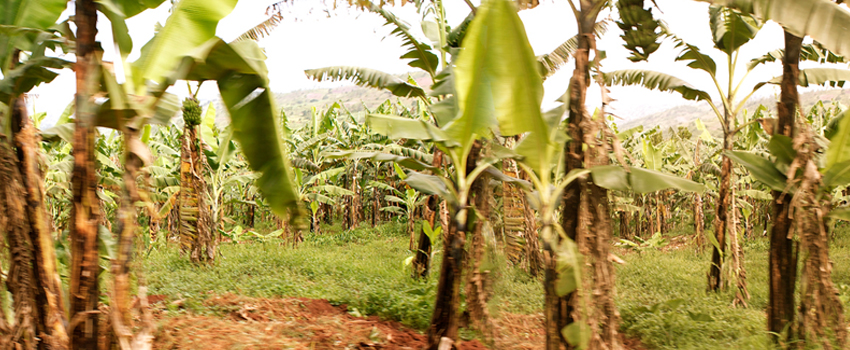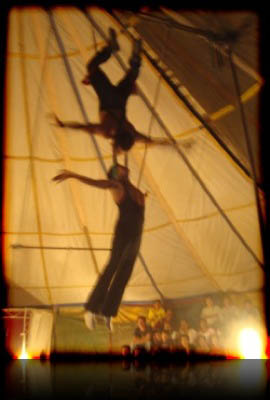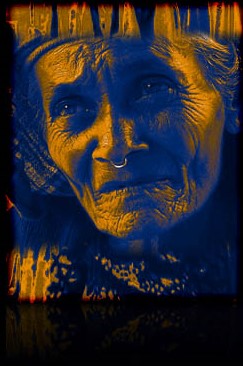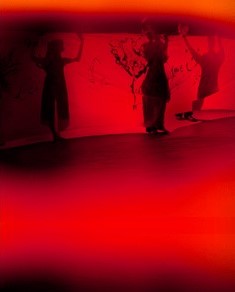Memories —> Witness
DOI:
https://doi.org/10.25071/1913-5874/37399Abstract
Entitled Memories —> Witness, the series contains large-scale panorama landscapes of Rwanda taken almost twenty years after genocide ravaged the country. It is part of a photographic practice that addresses unrepresentable suffering while being sensitive to concerns over exploiting pain. The series shares similarities with the approach Geoffrey Batchen describes as “looking askance,” where visual artists have turned away from a direct gaze on horrors in an effort “to bear witness to particular historical traumas while refusing to show them to us” (Batchen, 227). Mainly, the series is about acknowledging—at a profound level—that trauma is a deeply personal manifestation at the intersection of the past and the present. The contemplative aspect of photography is well suited to drawing out this awareness.
In her final publication, Sontag revisited her earlier cynicism of photography. Taking a more generous tone, but still in no way glibly celebrating the promise of photography, Sontag cautioned against any facile engagement with the medium. With respect to photographs and signification of horrific events, she said that only “narratives can make us understand. Photographs do something else: they haunt us” (89). Seared in memory or lingering in our thoughts, these spectral presences share affinities with other ghosts: those of traumatic experiences. Both photographs and traumatic incidents seek to have meaning attributed. Both can seemingly disappear from immediate consciousness only to be brought back unexpectedly given the conditions. Both depend on our socio-cultural environment and the uniqueness of individual experience in order to make light of them.
Photographs may have no inherent or absolute meaning, yet where meaning does exist it is developed through convention or ascription. At first glance, the landscape photographs in this series appear bucolic, benign—in line with the larger landscape tradition in Western art. The titles I have given each picture, however, charge the pictures with a particular harrowing meaning. The titles are quotes from survivors, and when set beside the photographs, create an unsettling juxtaposition. The deliberately jarring is meant to poke, prod, and prick spectators’ interest to plundering the pictures’ depths. The pairing of the photographs and words is intended to invite viewers to enter the narrative of genocidal trauma from an unconventional point, in an unconventional way.
The photographs in this series refer to the tremendous hate, greed, and violence of the 1994 Rwandan genocide. At the same time, they are pictures of landscapes of love, comfort and homecoming. Many survivors do not know the location of their family members' s remains, so some of these places, and many others like them across this small country, become familial places. This is a distinct kind of beauty in itself. Coming to this narrative at this point, nearly 20 years after the fact, is about recognizing that even though a story is no longer in the headlines, it does not mean that it is over, that it has been resolved. This story continues. The trauma borne by the survivors is something they will live with for the rest of their lives. And the burden of it can be lessened, to a degree, the more it is shared. Thus, in exploring the forest for the trees is one way to distribute the weight of that burden.
I could have used images that, sadly, have become almost commonplace, images of piles of bones, or row upon row of bleached-white skulls to refer to the inception of trauma. To do so would run the risk of turning people away, shutting them down, or simply reinforcing previously developed beliefs. I could have presented photographs of commemoration events or of the many genocide memorial sites that exist in Rwanda to refer to continued recollection. Such images tie too closely to official memory narratives, particularly ones that exclude underrepresented survivors. More importantly, these alternate pictures would have diverted attention from the central narrative of this photographic project: that of the ongoing, everyday affect of trauma.
Instead, I gravitated to a photographic practice that responds to the complexity of experiences and emotions in the wake of a mass atrocity by “[contesting] a tradition which has long privileged single iconic images as the exemplary representations of atrocity,” and a tradition that overlooks the ongoing and inter-generational impacts of trauma (Batchen, 238). By turning to different views—in some cases literary turning the camera lens to other content and scenes enables a broadened perspective on historical events and their ongoing affects. For survivors from the gruesome 100 days in 1994 when families, friends, and communities were torn apart by a carefully orchestrated, state-sanctioned genocide, the country’s landscapes, even in 2013, contain traces of what Jennie Burnet called “metaphysical scars”: painful emotions and recollections that are associated with incidents that occurred at particular places, but where no obvious physical traces remain. For witnesses encountering the pictures at a geographic and temporal distance, the photographs contain threads to all the events that led to that murderous time and since then. This series of photographs, like other ‘askance’ projects, “asks us to be critical interlocutors rather than passive observers” (Batchen, 239).
AcknowledgementsI would like to thank Amanda Grzyb (FIMS-Western), Eugene Nshimiyimana (McMaster University) and numerous members of the Rwandan community in Hamilton for their feedback and support of the project. I would also like to thank participants of the Rwanda 20 Years After conference at Weber State University in Utah, where I exhibited this series and presented a draft paper on these and other photographs referencing trauma. Mostly, I would like to acknowledge the survivors who shared their stories and encouraged further retelling of them: thank you.
References
Batchen, Geoffrey. “Looking askance.” Picturing Atrocity: Photography in Crisis. Ed. Geoffrey Batchen, Mick Gidley, Nancy K. Miller and Jay Prosser. London: Reaktion Books, 2012. 226-39. Print.
Burnet, Jennie E. Genocide Lives in Us: Women, Memory, and Silence in Rwanda. U of Wisconsin P, 2012. Print.
Sontag, Susan. Regarding the Pain of Others. Picador, 2003. Print.





